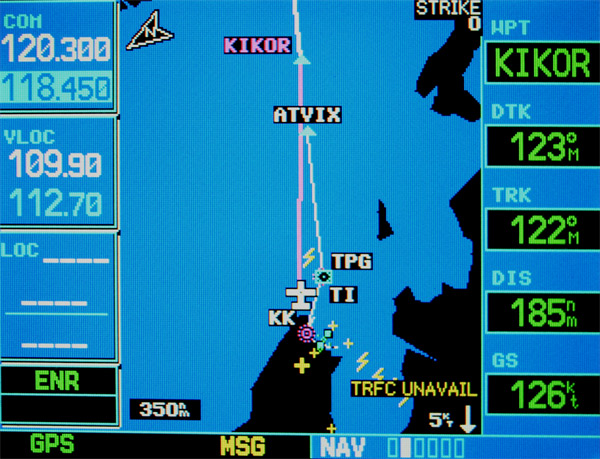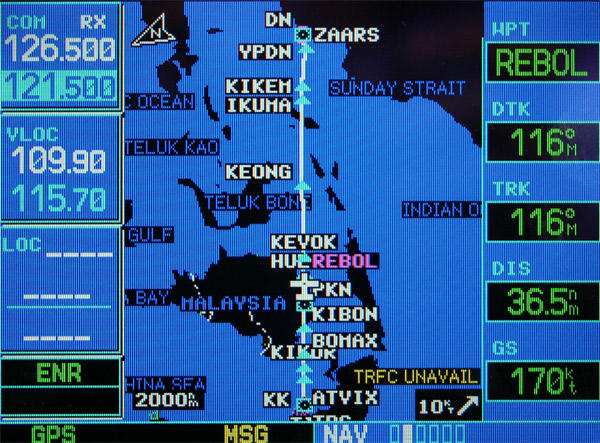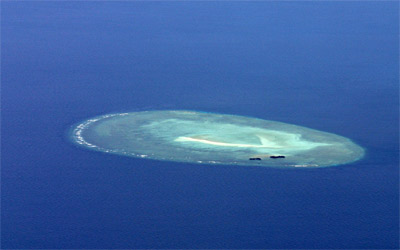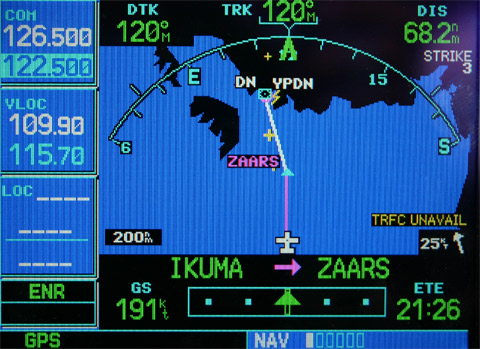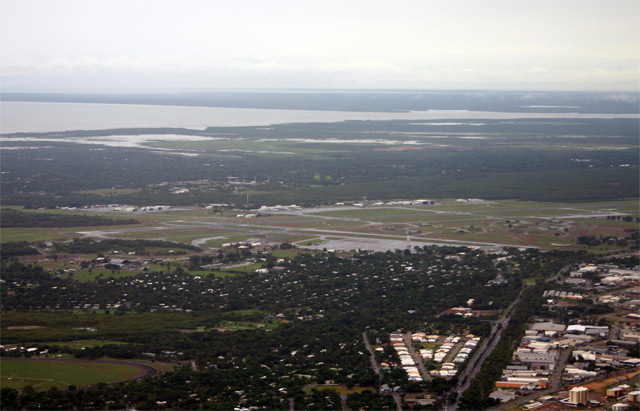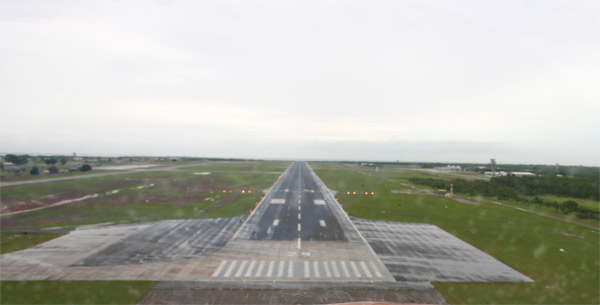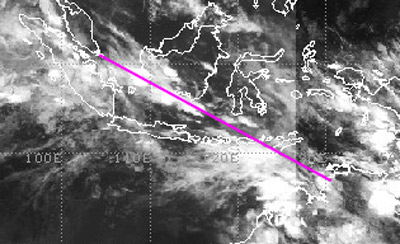
Satellite picture of route three hours before departure
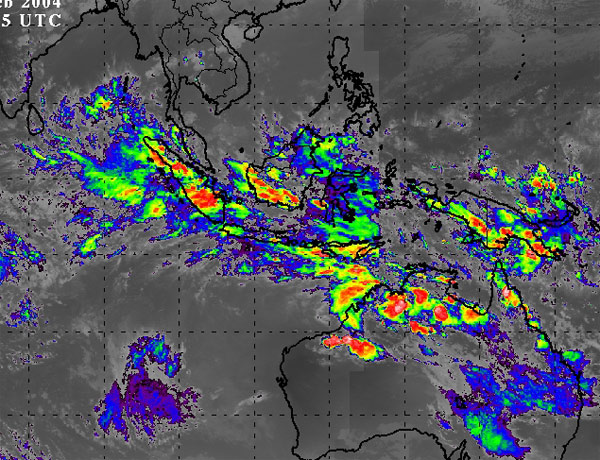
Singapore to Darwin
Singapore has major aviation facilities, and I planned my 100 hour inspection for the stop here. Along the way, a few items failed (back-up electric attitude indicator, for one), and replacements were shipped to Singapore for installation. I arrived late Friday afternoon, but Hawker Pacific arranged for a team of four to come out on Saturday to help out. We changed the oil and filter, swapped out the plugs for new ones and cleaned a huge amount of garbage out of the old. A crusty cake was beneath the electrodes, as much as a teaspoon came out of some. The engine was running well except for a brief foul on #6 that cleared on its own. The HF antenna was repaired, the AI was installed. The ground run and short test flight were fine, and we fueled it for Monday morning. I considered the fuel, the airport is sea level but short, the take off procedures are highly restrictive, requiring a tight 180 turn after takeoff, and the runway is 21 at night due to unlit obstacles to the north. 21 is also uphill, 1.2% first half, 0.7% second half.
